German-born, Joburg-based figurative painter Ada-Ruth Kellow is concerned with the uncomfortable and the unspeakable. Working in the tradition of social critique painting, her gaze is penetrating, but not unloving. She uses art to confront as well as to console and, sometimes, to gently tease. Humour for Kellow is like hope: it lightens the mood and softens the blow. It makes the message more palatable. And she's not one to hold herself separate from her own observations – her work is as much a reflection of herself, contradictions and foibles included, as it is of the society she's embedded in.
Kellow's work is rich in metaphors and symbols. She lets the "brush rest in ornamental patterns" and invites us to follow these traces as clues in an unfolding narrative. At the core of her practice lies a deep resonance with the words of American writer Susan Sontag: "We can't be haunted enough." In her own work, she finds that sense of haunted-ness in the faces, places, and spaces of Johannesburg – simultaneously a site of beauty and decay.
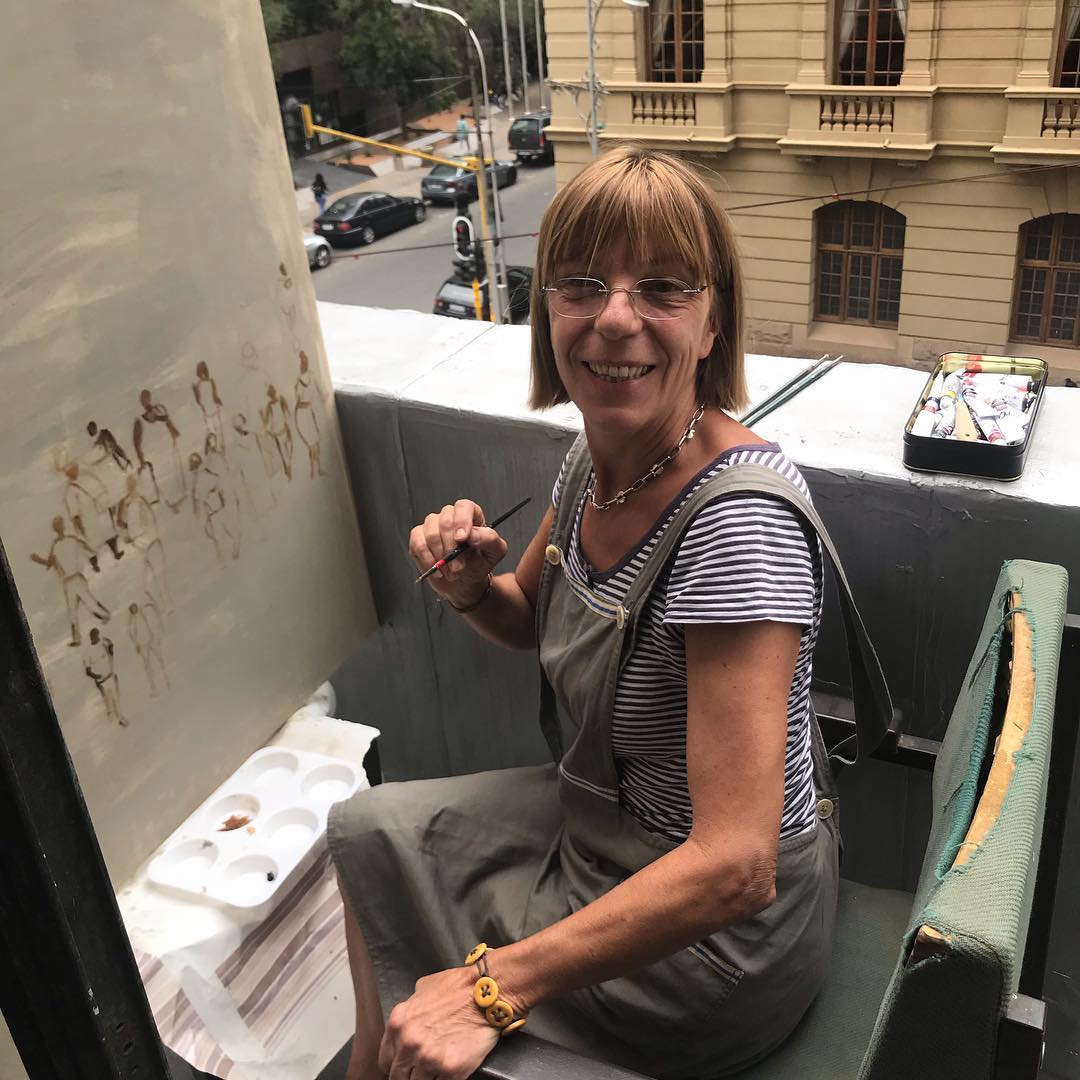
Kellow obtained a BA Honours Degree in Fine Arts from the University of the Witwatersrand and has taken classes in painting with Hermann Niebuhr in Fordsburg. It was there, at Lilian Road Studios, that Kellow had her practice for many years. She now works from her home in Emmarentia. Locally, Kellow has exhibited alongside South African artists at No End Contemporary, Aspire Art, and Gordon Froud galleries. Her solo exhibition with Lizamore & Associates, The Vegetarian, runs from Thu, Sep 6 – Tue, Mar 4, 2025 in Niche Cafe at Firestation, Rosebank.
We spoke to Kellow about 'getting stuck' in Joburg, boredom as a catalyst to creativity, and exploring the city's many excellent koppies.
What’s your first memory of putting paintbrush to page or canvas?
It wasn't just a brush touching a canvas, it was a conversation. I remember hesitating before making that first stroke, but once I started, it was as if the paint was bringing the inside out, and it just never stopped.
"[In Joburg] the decay and reinvention exist side by side. It has a raw, unfiltered energy I cannot ignore. Compelling me are the sharp contrasts between brutality and beauty, all at the same time."
We first saw your work at your space at Lilian Road Studios. Tell us about the impact of the city on your work and what it’s like to have a studio there.
For about seven years I worked in Lilian Road and every day it was like diving into an open, untreated wound that never healed. Strangely, the wound helped me heal, and even more strange was the feeling of not being an outsider. I felt at home. Still today, working now from my leafy suburb, I go back there looking at the scars of the city, of the people.
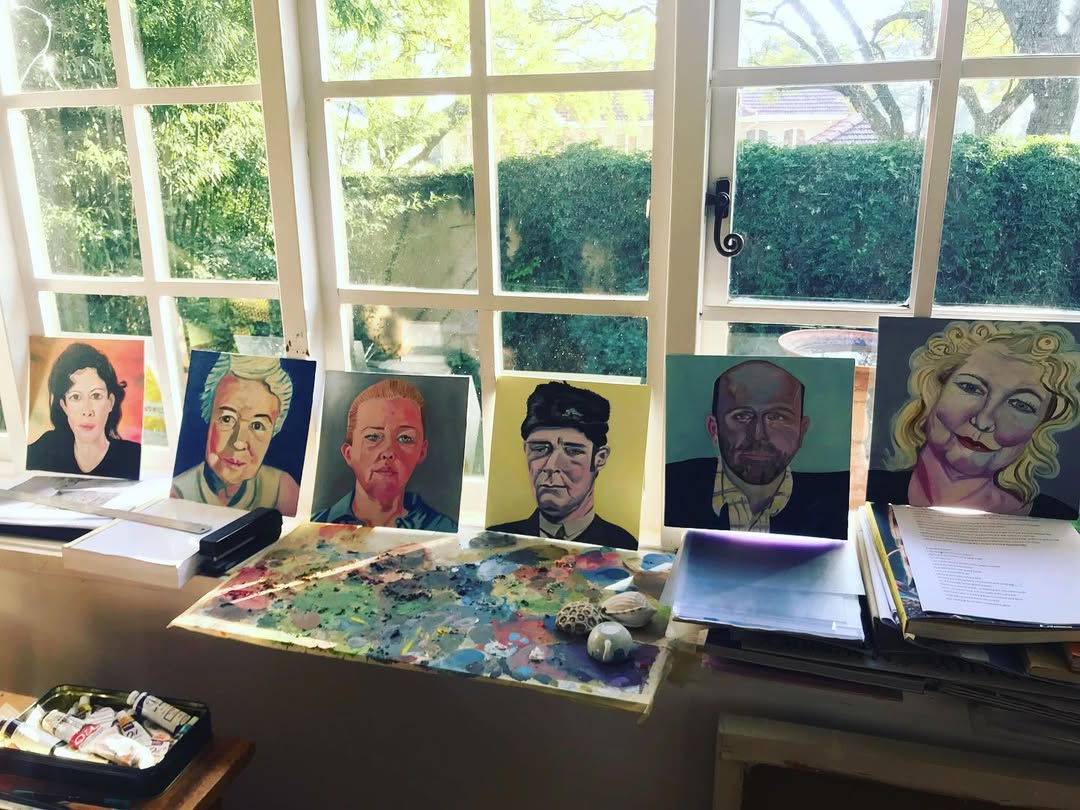
Any routines or rituals that help you get into the right headspace to paint, be it mentally, physically, or spiritually?
I love to be bored, doing monotonous chores. My diary has to be almost empty: no dates, no dinners, no appointments... then I start painting, only interrupted by a good book or a walk with my dogs. This session lasts for about three weeks, then I hectically message friends and see who is around until I seek boredom again.
You share an affinity with Susan Sontag, who said, "We can’t be haunted enough." What do these words stir up in you?
To open my eyes. These words evoke a restless longing for depth and its role in keeping ghosts present – whether cultural, political or my personal ones. I am worried that without echoes, we risk becoming numb or shallow.
What's one image or motif that you always associate with the city?
The skyline of the old city coming back from the airport.
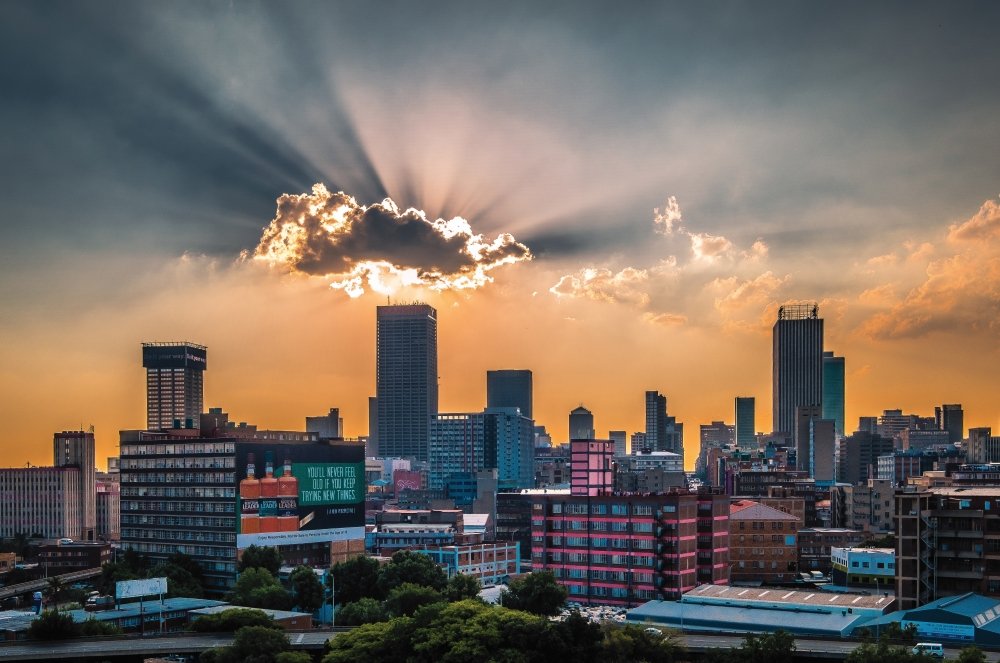
We asked your former studio mate Alastair Findlay this question, and now we put it to you: if you could design a Joburg coat of arms, what would it include?
The city's constant change, as if there is still a gold rush, in the middle of thunderstorms, and a starlit sky.
From the awful to the sublime, this city has so much that could spark an artist. What makes this an interesting city in which to create art?
The decay and reinvention exist side by side. It has a raw, unfiltered energy I cannot ignore. Compelling me are the sharp contrasts between brutality and beauty, all at the same time, which we know under the title The Beauty and the Beast.
"I am an observer of society, and nothing intrigues me more than my fellow humans."
Your painting Suburbia is about Joburg as a place of walls, always keeping something in or out. Can you share your reflections on this?
Walls create paradoxes: security, but also isolation and seclusion. The security walls are like a continuation of racial segregation, and I think we must not allow this. In our complexes and gated communities, behind walls and booms... inside and outside are humans with free spirits, and the best would be taking the walls down.
The drill is also a reflection of the many hardware stores [in the city]. My favourite one is Parkhurst Paint & Hardware – I love going there, and these guys can always help. The Weber grill and the zinc tub are all typically South African, even the young girl on the terrace in her Forever Young dress. I am critical of all of that, but I hope that the details show my love for people.
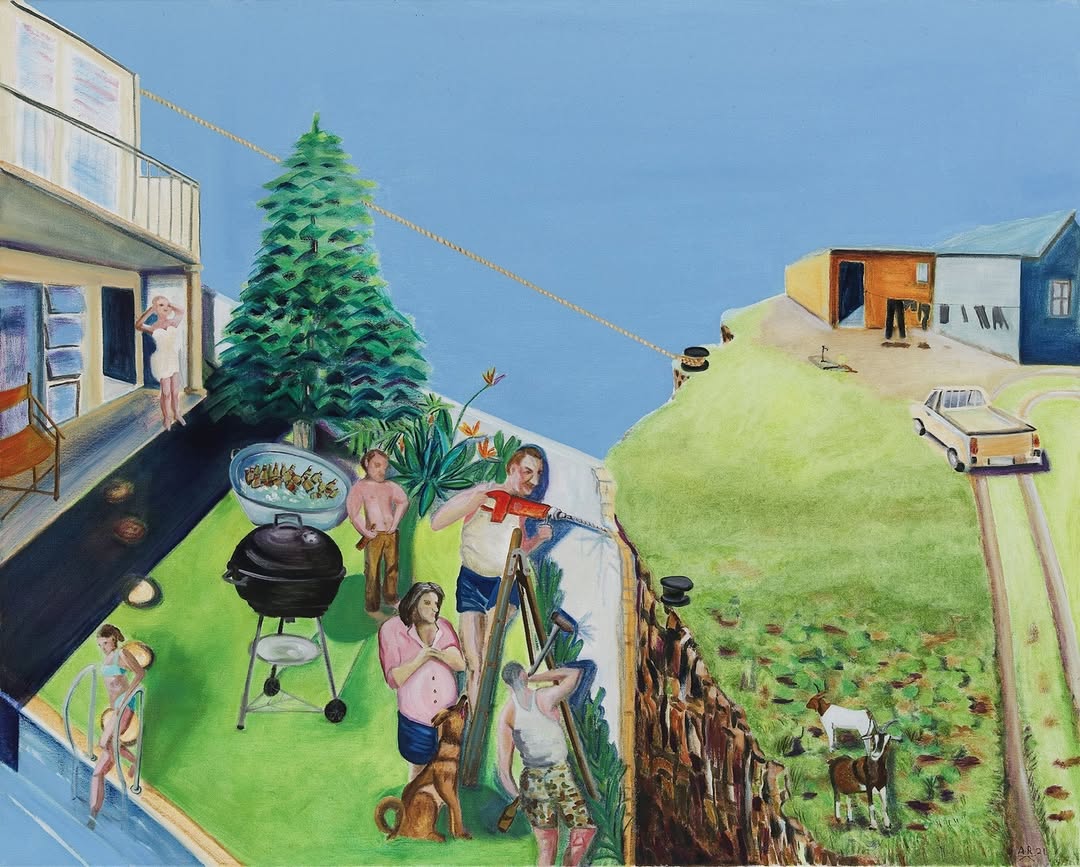
What sparked the series you’re showing with Lizamore & Associates, The Vegetarian?
I am an observer of society, and nothing intrigues me more than my fellow humans. I wonder if Ouma's cookbook has to be thrown away: how can we feel constantly bloated after eating a Chelsea bun? Being peckish over food is also a sign of having enough money, so this whole vegetarian and veganism [movement] is a class thing. I paint the carrots as beautifully as the person – fresh carrots are classy and make a statement. There is a form of 'revolution' going on in our diet. For some, it is about sustainability and CO₂ emissions, for others, it is wanting to be different. I believe it is time to look at simple carrots afresh.
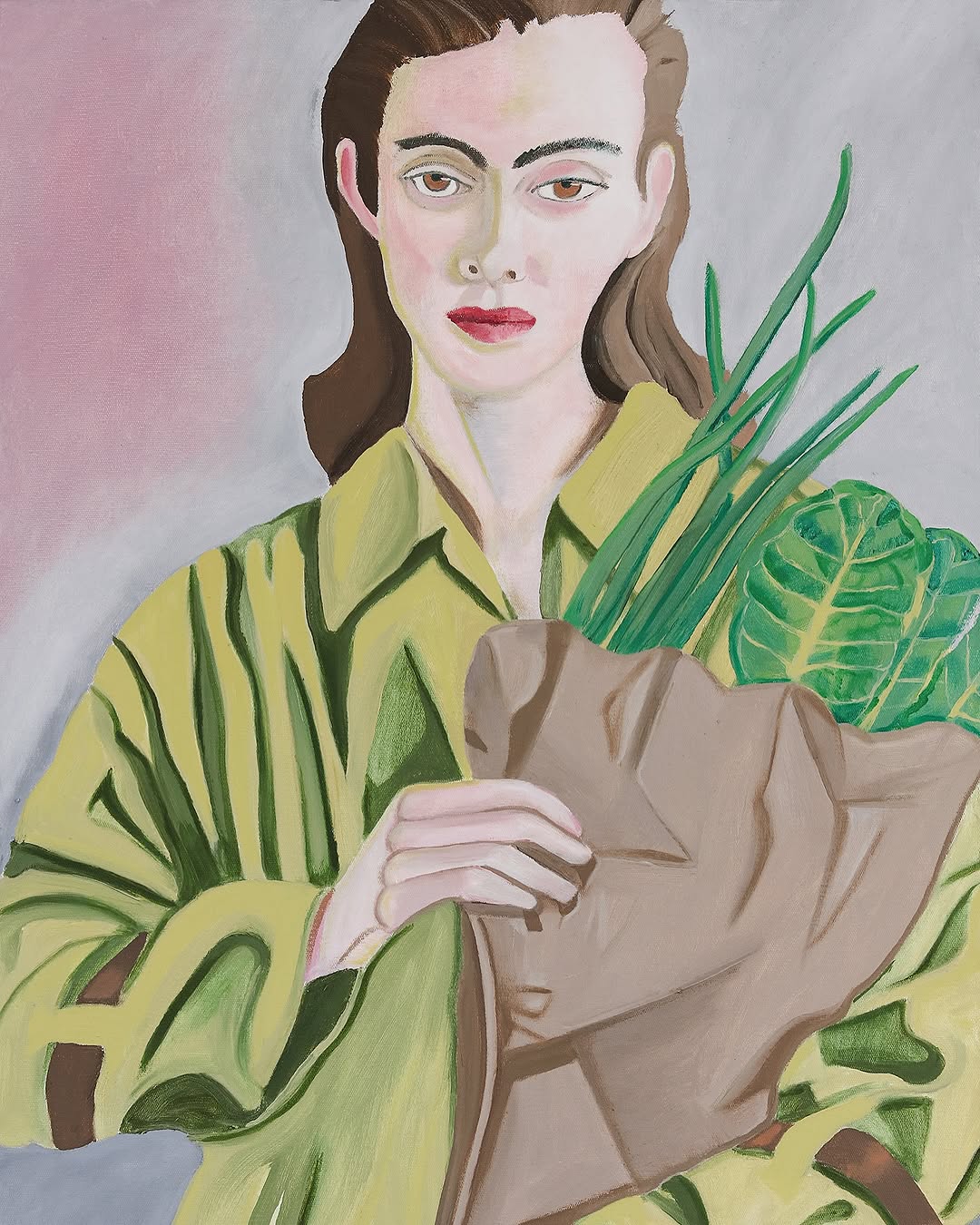
Why is humour so important to you?
Humour is a survival mechanism, especially when facing scars and decay. When dealing with trauma and trouble deliberately, I need an outlet to make all of this bearable. Humour is like hope. It makes critique palatable, and it is my peace offering to anyone who feels offended. And also, I don't want to take myself too seriously. I must admit that I put myself in every painting – my own shortcomings and the ability to laugh at myself.
What brought you to Joburg and what makes you stay?
Love in the first place, and then I got stuck here. But it is a nice stuck, and I am not getting tired of observing people.
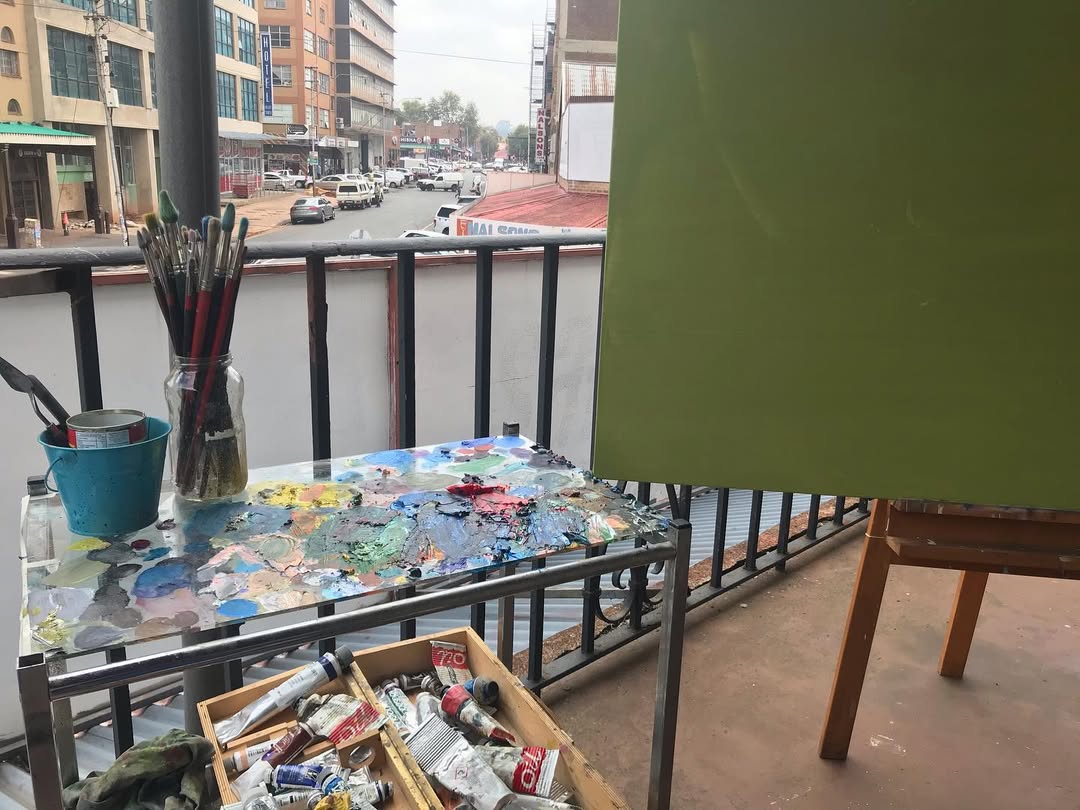
Home is...
Where my heart is, and my heart is in Joburg.
What is a surprising thing people might learn about Joburg by having a conversation with you?
Joburg consists of several CBDs: the old Joburg CBD, Rosebank CBD, Sandton CBD, and Midrand CBD. Soon, Joburg and Pretoria will have merged together and then one can talk about the reasons behind this... and this is always a long conversation.
Your favourite Joburg suburb, and why do you choose it?
Emmarentia Ridge. Only a few hundred meters from the Melville koppies and a few hundred metres from the Johannesburg Botanical Gardens; it is nature in the middle of the city (even the owls hang out here...)
What three things should a visitor not leave Joburg without seeing or experiencing?
Jacarandas blooming, preferably from a high-up spot like the Munroe Drive viewpoint in Houghton or Four Seasons Hotel The Westcliff; a Soweto tour; and a walk in the several koppies: Melville Koppies West, Linksfield Ridge, Little Falls Nature Reserve in Roodepoort, etc.
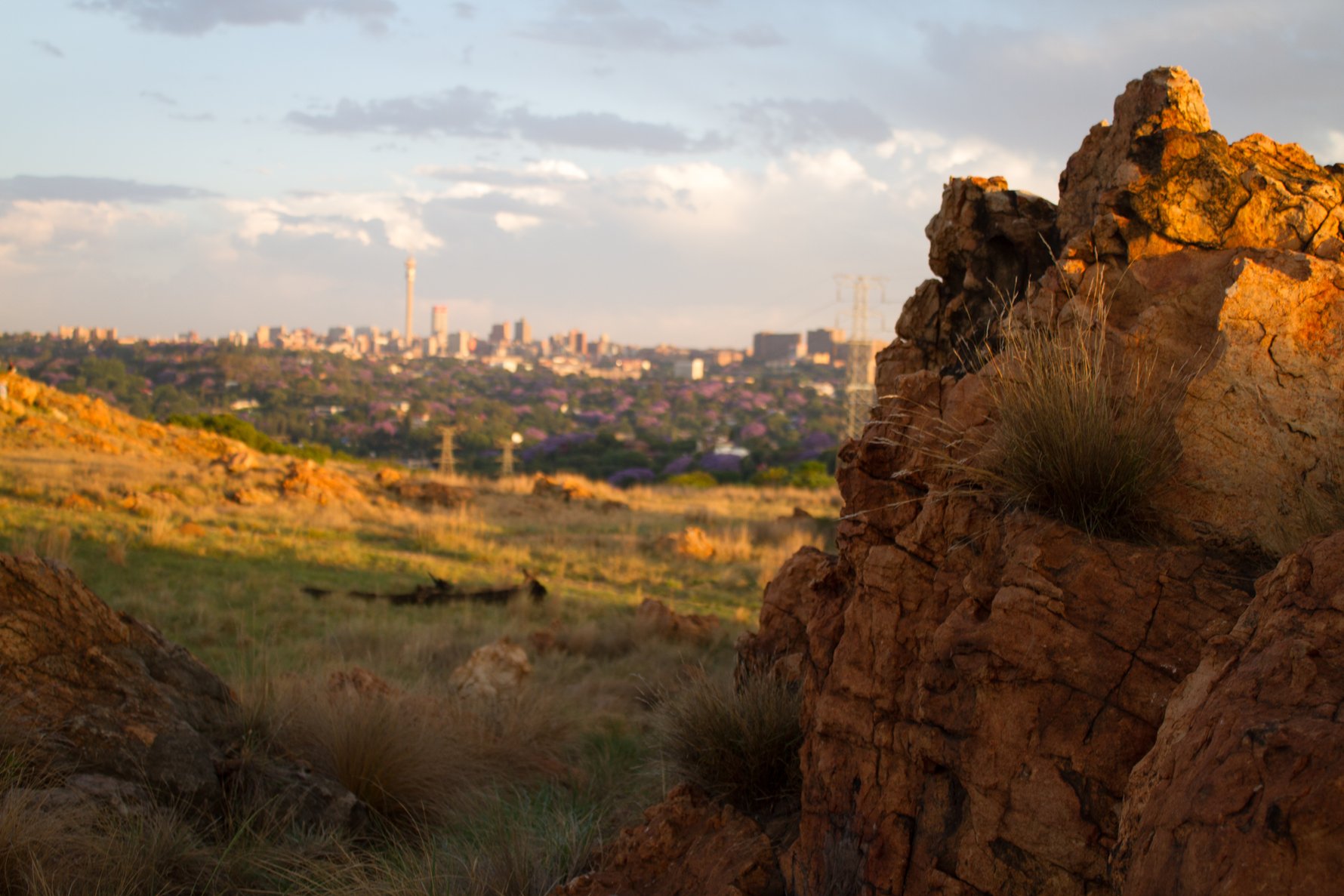
Your favourite Joburg author or favourite Joburg book?
The Joburg Book: A guide to the city's history, people & places edited by Nechama Brodie.
One song on your Joburg soundtrack that is either about Joburg or makes you think about this city?
Kramat by Dollar Brand.
The most memorable meal you have eaten in Joburg?
The lunch buffet at Service Station Café in Melville – it's always great!
If you could buy one Joburg building, which would it be?
Rand Club in Marshalltown.
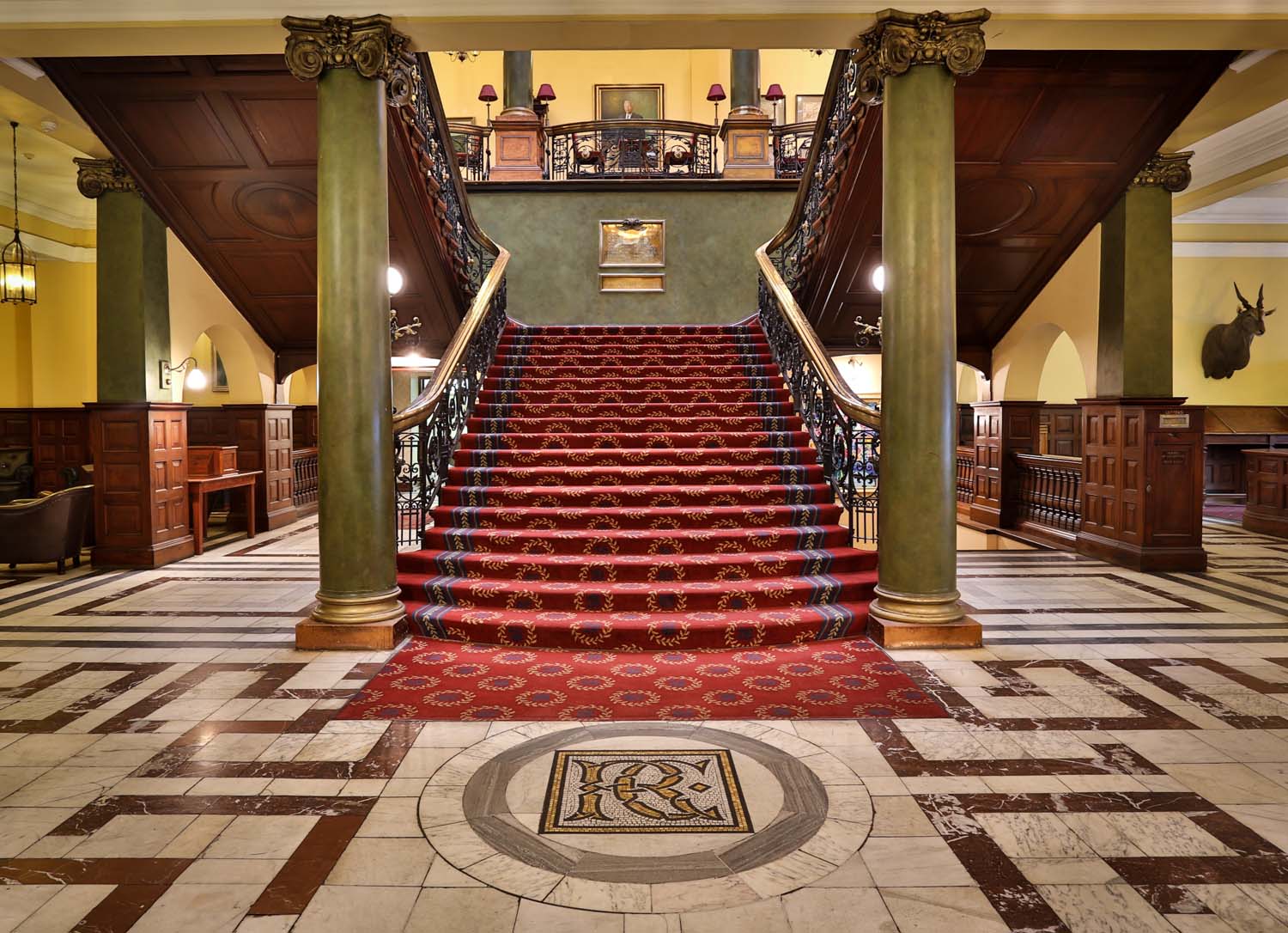
If you were Joburg's mayor for one day (average tenure), what would you change?
Social housing and subsidised transport.
Favourite Joburg label, and why?
five8ths at 44 Stanley. I like shirt-style dresses in either linen or cotton.
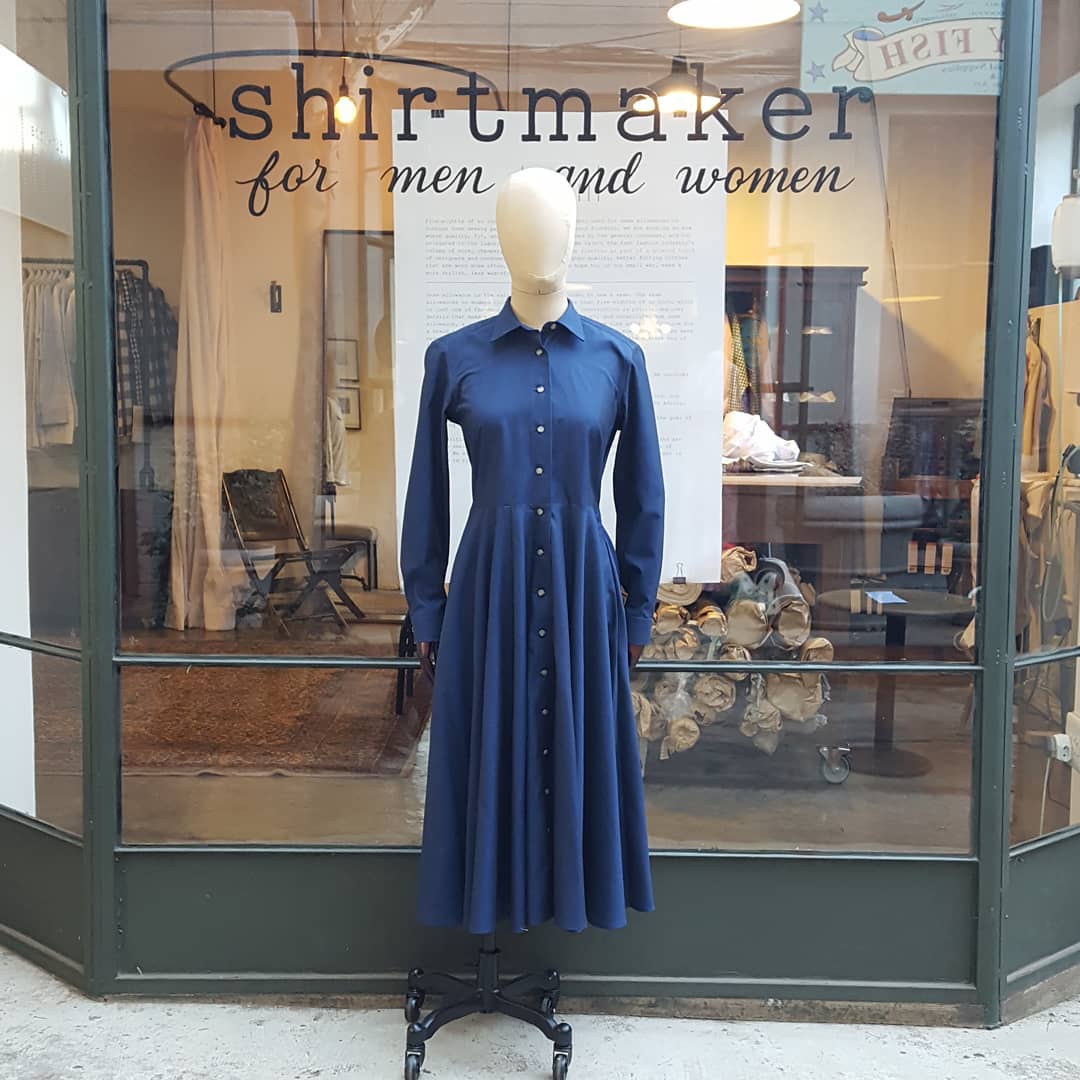
What makes someone a Joburger?
Buying chops at Impala Butchery in Northcliff.
What do you love most about Joburg?
It's -5 degrees at night and 25 degrees during the day in winter, and we have thunderstorms in summer.
What do you least like about Joburg?
Careless politics and the catastrophic mayoral situation.
Who would you honour with Freedom of the City? "Everyone who [...] keeps smiling, and stays human and kind."
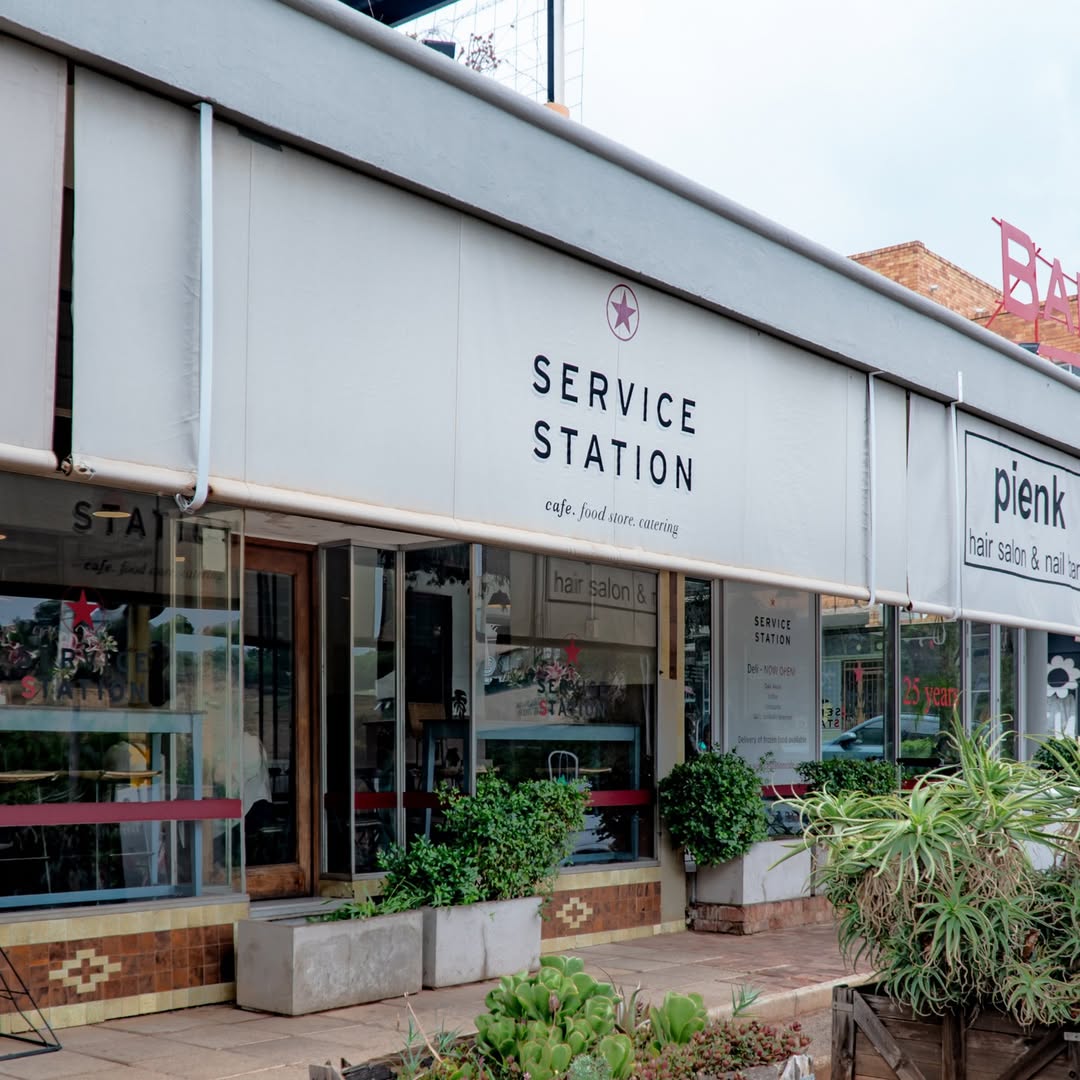
Your number one tip for a first-time visitor to Joburg?
Go for a jol on 4th Avenue in Parkhurst and just enjoy the many different food varieties.
Who is one Joburg personality you would honour with the Freedom of the City if you could, and why?
There is not just one: I would honour everyone who faces lawless taxis calmly, manoeuvres potholes without causing danger to others, keeps smiling, and stays human and kind.
The perfect weekend in Joburg includes...
A grilled chicken from Woolies and reading a newspaper or a book in the garden.
Three words that describe this city.
Insane; hopeful; survivor.
Check out some of our previous #MyJoburg interviews for more insights into the city:
#MyJoburg by Hayleigh Evans, theatre maker
#MyJoburg with Mary Sibande, trailblazing artist
#MyJoburg with Nick Hamman, radio DJ



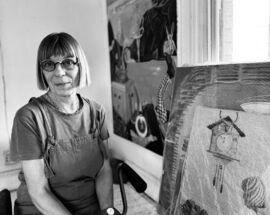
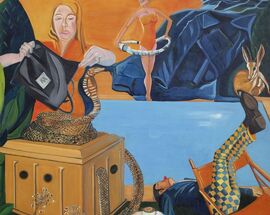


Comments